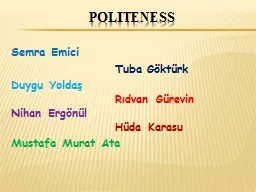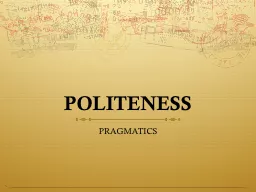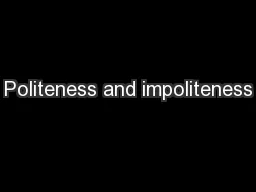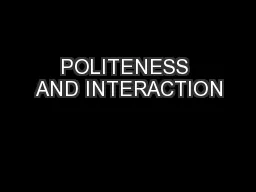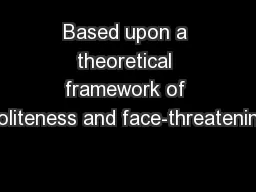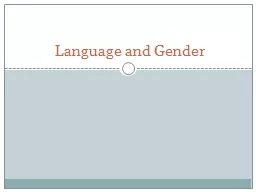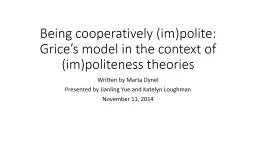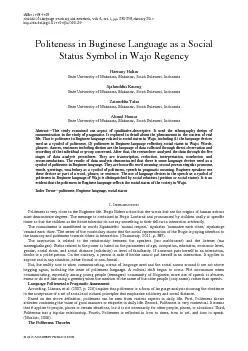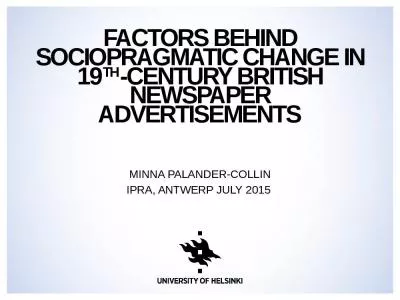PPT-POLITENESS Semra Emici
Author : calandra-battersby | Published Date : 2019-06-20
Tuba Göktürk Duygu Yoldaş Rıdvan Gürevin Nihan Ergönül Hüda Karasu Mustafa Murat Ata Politeness Mustafa Murat Ata At all times when people interact
Presentation Embed Code
Download Presentation
Download Presentation The PPT/PDF document "POLITENESS Semra Emici" is the property of its rightful owner. Permission is granted to download and print the materials on this website for personal, non-commercial use only, and to display it on your personal computer provided you do not modify the materials and that you retain all copyright notices contained in the materials. By downloading content from our website, you accept the terms of this agreement.
POLITENESS Semra Emici: Transcript
Download Rules Of Document
"POLITENESS Semra Emici"The content belongs to its owner. You may download and print it for personal use, without modification, and keep all copyright notices. By downloading, you agree to these terms.
Related Documents

